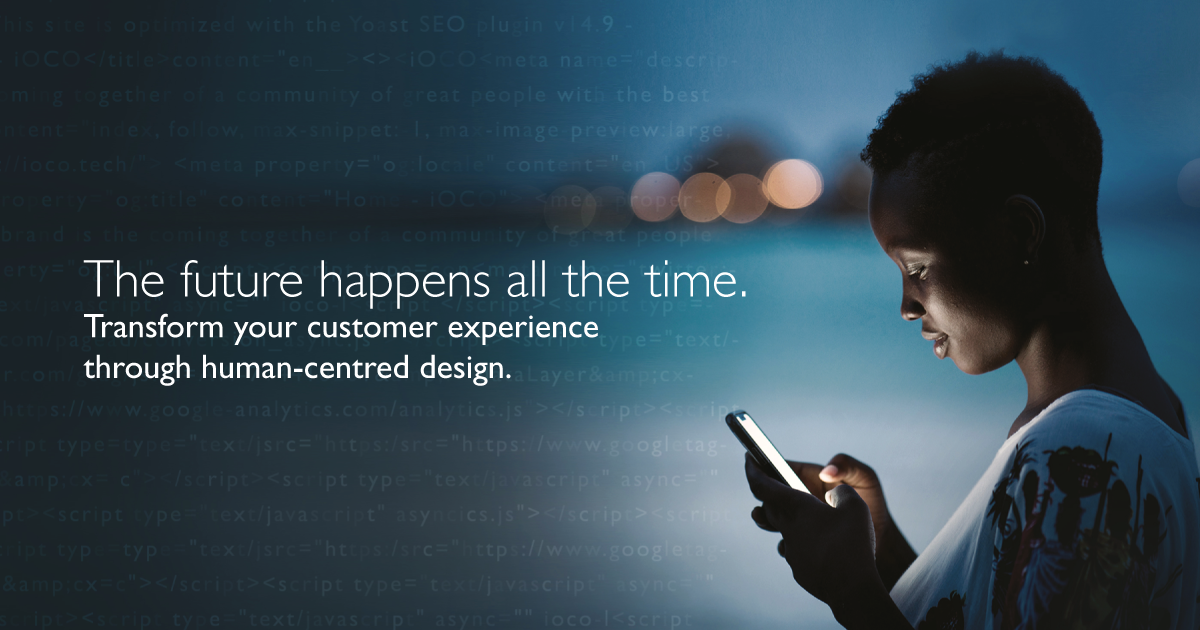Creating competitive advantage through custom, design-led development
Traditional drivers of custom software development – building additional revenue streams and cutting costs – consistently motivate our clients. But business sustainability in a constrained economy and a time of constant disruption doesn’t only depend on maintaining a healthy income statement. It requires you to distinguish yourself from the herd.
Our clients are increasingly looking to us to give them a durable and attractive competitive advantage. This is most often accomplished through the design and creation of differentiated customer engagement channels. In its simplest form, this involves the creation of new ways to interact with your customers – based on their desires.
AppDev and Human-Centred Design
You can’t differentiate yourself when you and your competitors are all using the same packaged, off-the-shelf applications. And that’s why custom solutions are so important. But it’s not enough to do something new. You’ve got to do it exceptionally. That’s where an important component of our approach to AppDev comes in: integrated, human-centred design.
It begins with discovery – a proper assessment of what a client is trying to achieve and where possible a workshop to bed down requirements. More often than not this is a learning experience for the client as well as for us, as opportunities become apparent and thinking is clarified. Then it’s over to our design teams to create a testable concept.
This concept can often enter the review and testing phases before a single line of code is written. The people who test the design are the people who are going to use it. For example, in our recent work with a large financial institution, we had a useable design model that was refined and sent out to branches to use as a staff training platform while the code for the actual implementation was being written.
Apps designed with end-users in mind
The desires and expectations of the end user are integrated from the very start of the process. User-experience design is absolutely fundamental. The bar for user experience is incredibly high because so many people have smartphones and iPads. They don’t want information-heavy interfaces. They want something that is easy to use and that gets the job done.
Once there’s agreement on the end goal, and the design thinking is underway, then the project is approached in an Agile fashion so there’s a realistic timeline to delivery and we can start bedding down bigger and bigger wins in an iterative fashion. The interaction between design and development is nurtured throughout the process. It’s a constant interaction between the two to make sure that what we’re building, and the way we’re building it, is constantly aligned to the end-user’ needs.
We’ve seen what happens all too often when a company sees the need for differentiation and tries to accomplish it themselves. They’ll throw the problem towards the developers in their IT department. The problem with that is you run the risk of running expensive projects that solve for the needs of your CIO, not your customer.
We love developers. But we realise that technical specialisation always means a compromise. Giving the job of design to designers means that instead of conforming to a business requirement spec, you’re conforming to the needs of your users.
Cross-functional skills within a design-led approach
This approach requires a professional team with cross-functional skills, including scrum masters, business analysts, business systems analysts, user-experience designers, systems architects, DevOps engineers, quality assurance analysts and software developers. Each member of the team is given the freedom to do their job exceptionally.
The result is a product that people enjoy using and from which they get value. And which sets you apart from the herd.
Clydie Cronje
Cluster Executive, Application Development, iOCO
Learn more
[ninja_form id=’224′]



